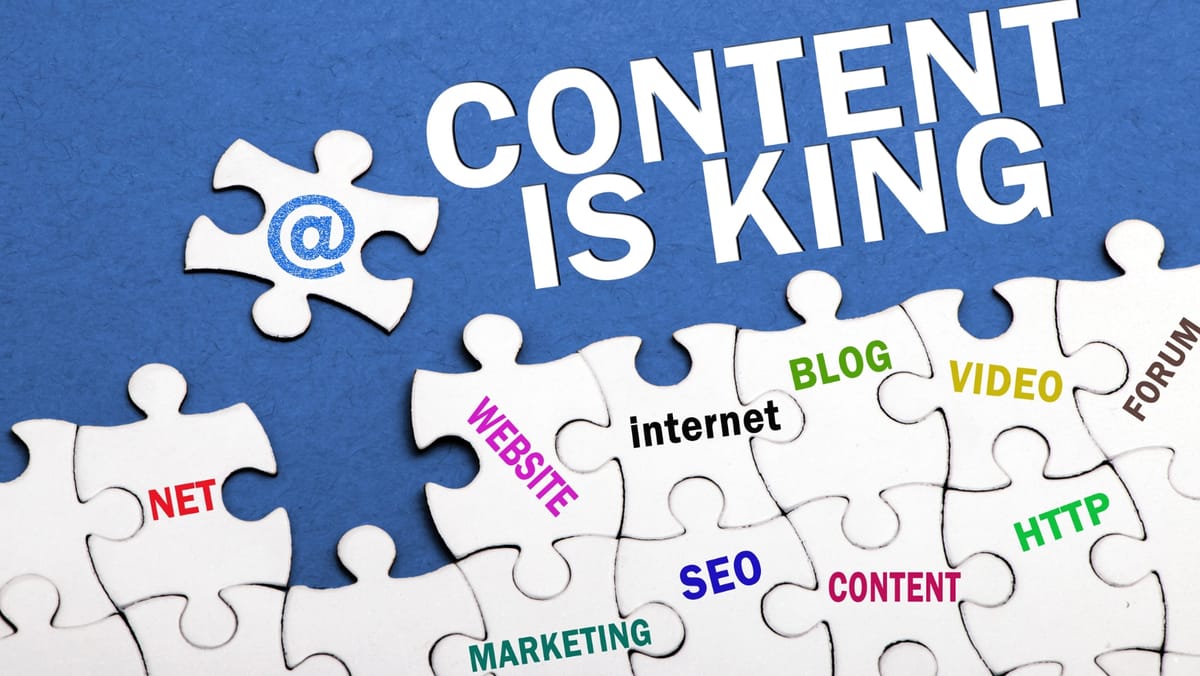Crafting a Winning Content Marketing Strategy: A Step-by-Step Guide

Whether you're new to content marketing or have been using the same approach for a while, there's always room for improvement. Ensuring your content strategy is both engaging and distinctive is essential.
With millions of posts published daily worldwide, standing out and attracting consistent traffic to your brand can be challenging. This is where a strong content marketing strategy becomes crucial.
Imagine planning a 3-day road trip where you know your destination but have no idea about the route, where to stop, or what sights you'll encounter along the way. How likely are you to reach your destination smoothly? That's exactly how likely you are to achieve your marketing goals without a content strategy.
In this blog, we'll explore what a content strategy is, why it's important, and the steps to develop a robust content strategy.
What is a Content Marketing Strategy?
A content marketing strategy involves the comprehensive process of planning, creating, publishing, and managing content to attract and engage a specific audience while meeting their needs and supporting business objectives.
While this might sound complex, it doesn't have to be! Let's break it down into four essential elements:
- Specific Goal: What do you want to achieve with your content?
- Demographic: Who is your content for?
- Content Type: What type of content will you create?
- Promotion Plan: Where will you publish and promote your content?
Case Study Example: Promoting Herbal Tea for Sleep Issues
Let's walk through a practical example to illustrate how these elements come together.
Scenario: You're creating content to promote a herbal tea designed to help people with sleeping problems.
Goal: Increase website traffic from relevant channels.
Demographic: Your audience includes busy professionals and individuals with hectic lifestyles, ranging from young adults aged 24-25 to boomers aged 55 and above.
Content Type: You could create a variety of content, such as:
- Blog posts discussing the benefits of herbal tea for sleep
- Informative articles on how the tea works and its ingredients
- Video testimonials and success stories from satisfied customers
- Infographics detailing the science behind the ingredients
Promotion Plan: To reach your diverse audience, you'll need a multi-faceted approach:
- Modern Channels: Use social media platforms, SEO, and SERP rankings to attract younger audiences.
- Traditional Channels: Utilize newspapers, magazines, and cable TV ads to reach older demographics.
Putting It All Together
- Determine Your Goal: Your goal is to boost traffic to your website from relevant channels.
- Identify Your Demographic: Target busy professionals and individuals struggling with sleep issues, spanning a wide age range.
- Select Your Content Types: Create engaging and informative content, including blogs, articles, videos, and infographics.
- Plan Your Promotion: Use a mix of modern and traditional channels to ensure your content reaches the right audience.
By following these steps, you can develop a targeted content marketing strategy that effectively engages your audience and achieves your business goals. Whether you're promoting herbal tea or any other product, this structured approach ensures your content efforts are well-coordinated and impactful.
Benefits to having a Content Marketing Strategy
A good content strategy allows for a business to operate smoothly and also have an intention behind their marketing practices. Its easy to create and post content, but whether or not that content is doing anything for your business is a separate story altogether.
Content marketing strategy is important to your business because:
- It aligns the team to your business goals: It ensures that your entire team is aware of the goal and suggests and creates content in line with the intention of achieving these goals. This not only create a consistent voice in your marketing but also significantly increases your chances of achieving your goal.\
- Guides content creation and channels of distribution: A content marketing strategy involves planning the types of content to produce, such as images, blog posts, infographics, videos, and podcasts. Additionally, it lets you decide on the best channels for distribution, whether it's social media, email marketing, or the company website.
This planning helps ensure the content is consistent, timely, and relevant to the audience’s interests and needs, building brand loyalty and advocacy.
- Resource optimization: When your team understands the goal and the platform is established, it minimizes the use of resources such as manpower and budget on irrelevant areas. This leads to a more focused and appropriate allocation of resources, providing an opportunity for your company to achieve the maximum ROI possible.
- Improves online visibility: When you have the right content, on the right platforms, and they are all pushing towards a common goal, this leads to improving your visibility, your ranking on SERP and your organic traffic.
With the use of niche specific keywords and content on relevant topics, in addition to quality content is sure to bring in more qualified leads in your funnel.
- Creates brand authority and trust: By consistently creating high-quality posts, with relevant and valuable content, a brand is identified as an industry leader and this gives the brand a certain authority. This creates a trust with your audience, which is important when building a long term relationship.
Let's dive into the details of crafting a content marketing plan.
Steps to Create a Successful Content Marketing Strategy
Creating a successful content marketing strategy involves a series of well-planned steps. By following a structured approach, you can ensure that your content efforts are aligned with your business goals and effectively engage your target audience. Here’s how to do it:
1. Define Your Goals
Before developing a content marketing plan, it is crucial to clarify your objectives. Follow these steps to set clear and actionable goals:
- Use the SMART Framework: Make your goals Specific, Measurable, Achievable, Relevant, and Time-bound.
- Prioritize Goals: Identify which goals are most critical and feasible.
- Conduct Solo Research: Validate that your goals are sustainable and realistic.
- Analyze Meeting and Team Notes: Gather insights from team discussions and past meetings.
- Review Business Goals: Understand your company's overall objectives to ensure alignment.
This structured approach helps you determine immediate needs and long-term actions, ensuring effective resource allocation and a well-defined content marketing strategy.
2. Conduct Persona Research
Understanding your target audience is essential for a successful content strategy. Develop detailed buyer personas to ensure your content resonates with your audience:
- Conduct Annual Market Research: Regularly update your understanding of your audience to stay relevant.
- Refine Personas: Use your research to continuously improve your personas.
- Group Leads by Common Characteristics: Segment your audience based on shared traits.
- Collect and Analyze Data: Gather data from various sources to identify patterns.
By defining your buyer personas, you can create more relevant and valuable content, leading to higher engagement and conversion rates.
3. Perform a Content Audit
Reviewing your existing content is crucial for expanding and improving your content offerings:
- Optimize Content Creation Workflow: Address bottlenecks and inefficiencies to improve productivity.
- Identify Areas for Improvement: Look for opportunities to enhance and repurpose popular content.
- Assess Quality and Relevance: Ensure your content meets the needs and interests of your target audience.
- Evaluate Past Content Marketing Efforts: Identify what has worked well and what hasn’t.
A thorough content audit helps you build on your strengths and address any gaps in your content strategy.
4. Choose the Right Types of Content
Selecting the right content types is key to engaging your audience and achieving your goals. Consider these options:
- Infographics
- Podcasts
- Videos
- Blog Posts
- Images
To make informed decisions, consider the following factors:
- Audience Insights: What are your audience's preferences, interests, and pain points? Which content types are most likely to engage them and address their needs?
- Goals: What are you trying to achieve with your content? (e.g., driving conversions, building brand awareness, educating your audience)
By aligning your content types with your goals and audience insights, you can create content that resonates and drives results.
5. Brainstorm Ideas
Once you have your goals, personas, and content types defined, it's time to brainstorm content ideas:
- Create a Content Calendar: Plan out your content schedule to ensure consistent publishing and a steady flow of fresh content.
- Use Tools for Inspiration: Utilize tools like keyword planners, social media trends, and competitor analysis to generate ideas.
- Identify Topics of Interest: Consider what topics will be valuable and engaging for your audience.
6. Publish and Manage Your Content
Effective content management is essential for maintaining quality and consistency:
- Adjust Based on Insights: Use performance data to refine your content strategy and improve future content.
- Monitor Performance: Track key metrics like traffic, engagement, and conversion rates.
- Use a Content Management System (CMS): Streamline your content creation and publishing process.
By following these steps, you can develop a comprehensive content marketing strategy that drives meaningful results for your business. Start today and watch your brand's presence and engagement grow!
And as always, Stay tuned and subscribe to stay updated with the ever-changing landscape of Marketing!




